Post from the near future: Top 10 physics predictions for 2016
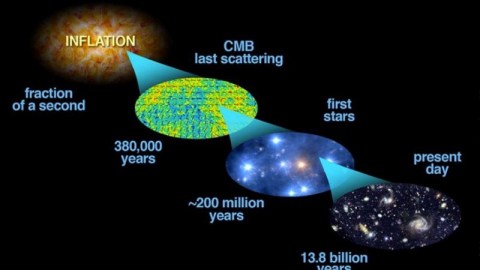
Science is the best tool we have for predicting the future. Here’s what the next year ought to bring.
“For last year’s words belong to last year’s language And next year’s words await another voice.” –T.S. Eliot
2015 was a banner year for exploring the Universe in a number of ways:
- the LHC came back online at the highest energies in history,
- scientists discovered evidence for flowing water on the martian surface,
- the last great prediction of the Big Bang — a cosmic neutrino background — was detected and even had its temperature measured,
- and a huge bounty of exoplanets were discovered, raising even higher our hopes for life in the Universe beyond Earth.
But the best is yet to come, and 2016 promises to reveal even more truths about the Universe. Even more certain than that, though, is what you’re likely to read about in the popular press, which is certainly going to involve some stories that won’t turn out to be true at all! Without further ado, here are 10 stories that I predict you’re certain to see in the coming year — as part of Medium’s posts from the near future series — with a comment on whether or not these discoveries will wind up panning out.

1.) Dark matter experiments set record limits for dark matter detection.
Directly detecting dark matter has been something of a “holy grail” of physics. Many teams — XENON, LUX, CDMS and ADMX, just to name a few — have all been chasing dark matter by attempting to either observe it colliding with normal (nuclear) matter, or by causing it to interact electromagnetically, and either produce or annihilate into photons. Other indirect methods have seen dark matter already, such as astrophysically via the collision of massive galaxy clusters, but there hasn’t been any direct evidence.
There are experiments like DAMA and CoGENT that have seen an annual modulation of their interaction rates, but that signal could be due to any number of experimental effects that aren’t dark matter. Thus far, the direct detection experiments give us our greatest limits on dark matter, and I predict that those limits will improve, and that we’ll fail to detect dark matter directly for yet another year.

2.) Physicists at the LHC will detect at least three particles… that turn out not to be there.
The Standard Model of elementary particles is good. It’s really, really good. It’s too good, in fact, meaning that when we look at all the collisions we create from particles, what comes out, and how those new particles interact and decay, we don’t need anything other than these Standard Model particle to explain it. This is a problem for all sorts of extensions to what we currently know, like extra dimensions, supersymmetry, technicolor and string theory. It’s a problem for dark matter as well, assuming we ever want to detect it in a lab.
In an ideal world, we’d be able to discover new, fundamental particles at the LHC. In particle physics, the “gold standard” for discovery is 5σ of statistical significant, but things are so dire that even 3.3σ, 2.5σ or, most recently, 1.9σ “particles” are being reported. These are almost certainly not particles; things at this level of significance given this much data almost always turn out to be fluctuations, not real, bona fide particles. This type of reporting is what we call grasping at straws, and a surefire indication that we haven’t found anything yet. I predict we will not only continue to find nothing new at the LHC, but that we’ll continue to report speculative results as though they’re real and not phantasms… at least three independent times next year.
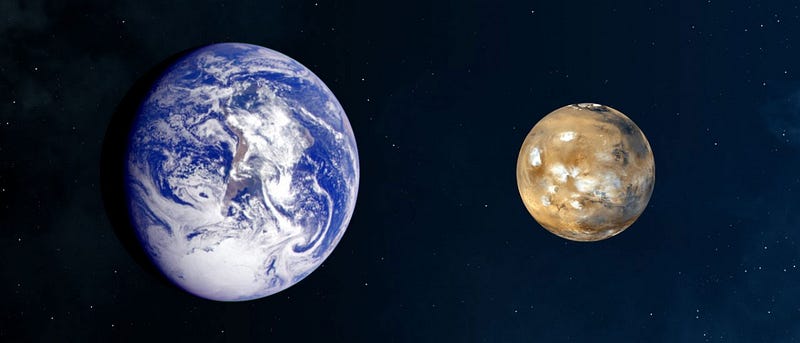
3.) Mars will reach opposition in May of 2016, and the internet hoax that “it will be as big as the full Moon” will return.
No, Mars will not appear as big as the full Moon. Not now, not when it reaches its closest approach to the Earth, and not ever in the future history of the Solar System. The reality is still incredibly interesting — Mars has the largest variation in its opposition distances to Earth of any planet — but apparently that’s not interesting enough for some people. Some years, like 2018, will see Mars approach just 35 million miles (56 million km) from Earth, while others, like the 2027 opposition, will have Mars get no closer to Earth than 63 million miles (102 million km).
This is because Mars’ orbit is so elliptical, rather than perfectly circular, so much so that the extra distance from Earth combined with the additional distance from the Sun means that the close “oppositions” appear five times brighter and nearly twice as large as the far ones. Still, even the closest opposition will allow skywatchers to see a Mars that takes up 25 arc-seconds (or 0.007 degrees) on the sky, while the full Moon takes up about 1800 arc-seconds (or 0.5 degrees) on the sky. Mars would have to be just 500,000 miles (800,000 km) away to appear as large as the Moon, something that will never happen. But still, I predict the ill-informed hoax persists.
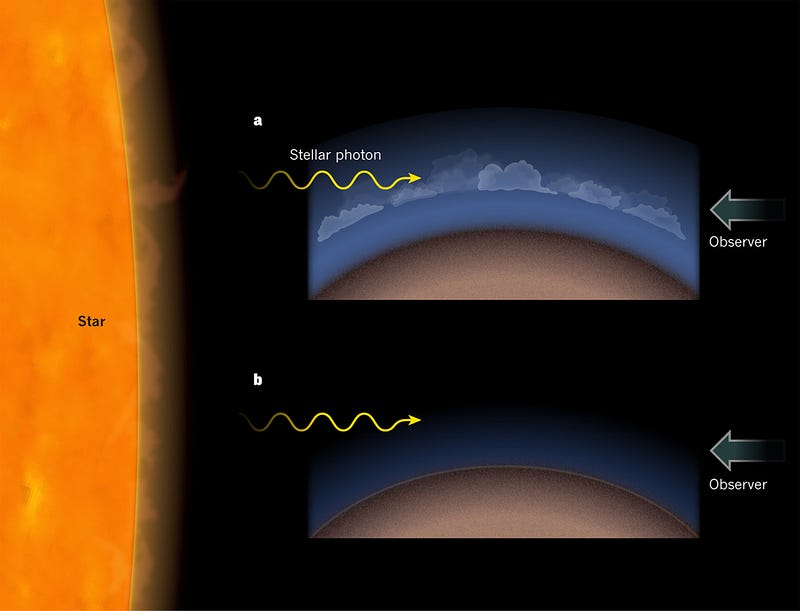
4.) We break the record for smallest exoplanet ever discovered with water in its atmosphere.
What, you thought this list was going to be devoid of positives? The reality is that we’re continuing to find planets with Kepler data, including — in particular — worlds in the super-Earth to mini-Neptune sizes. These are generally worlds that have rocky cores comparable to or only a few times bigger than Earth’s, but with a hydrogen/helium envelope surrounding them. In many cases, these worlds also have other interesting elements and molecules in their atmosphere, many of which we can detect by their absorption features from the sunlight shining through them.
We can do better with larger planets around smaller stars, so the way to get the smallest planet’s atmosphere is to look around smaller stars. We’re still a long way from finding an Earth-like planet with water around a Sun-like star, but we’ve gotten Jupiter-like planets around Sun-like stars and Neptune-sized ones around smaller stars. The technology is there to get a mini-Neptune around a very low-mass red dwarf, and I’m going out on a limb — thinking we get a gift from serendipity — and predicting we’ll get our smallest water-containing exoplanet yet.
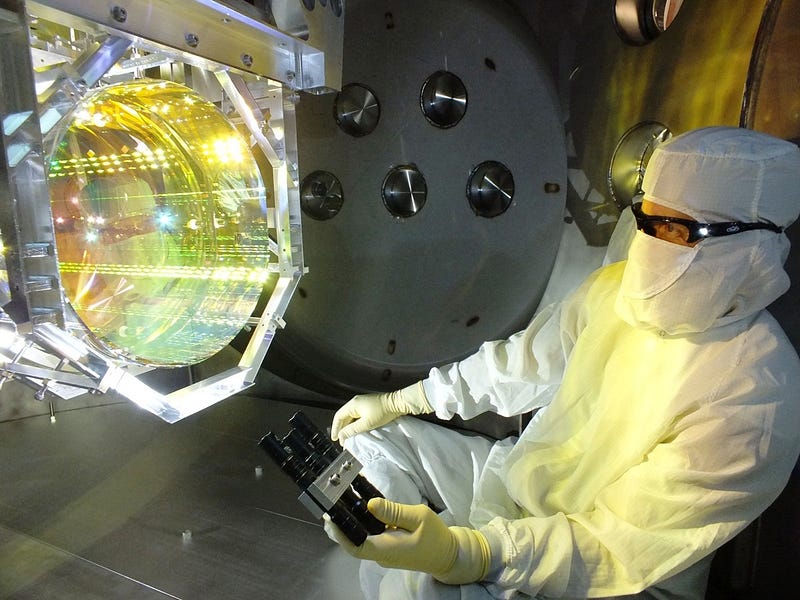
5.) Advanced LIGO sees its first candidate gravitational wave.
This is another ambitious possibility: the direct detection of gravitational waves. One of the last unverified predictions of Einstein’s relativity, we strongly suspect that these ripples through space and time exist. We’ve seen orbits decay (of neutron stars orbiting one another closely), and it’s presumed that gravitational radiation is the mechanism by which they decay, in accordance with GR’s predictions. But until we verify the existence of gravitational waves directly, we don’t know for sure.
Until this year, the technology simply didn’t exist. But with Advanced LIGO now online — which happened only in September — we should gather enough data that if the rates of gravitational wave emission are what we expect them to be, we have a good chance at seeing our first gravitational wave this year. By bouncing laser beams over incredibly long distances between two mirrors, we should be sensitive to any “ripples” in space that change these distances, and Advanced LIGO has the first legitimate shot this coming year. It’s a bold prediction to claim success in its first full year, but I’m such a fan I have to go for it!
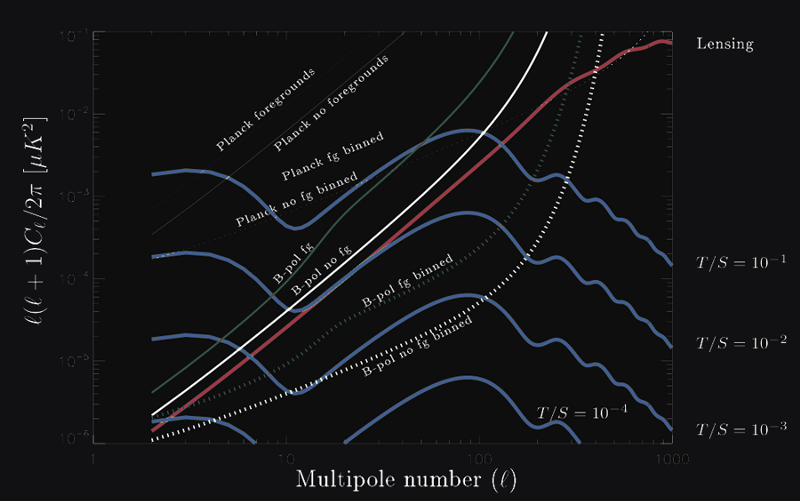
6.) Gravitational waves from inflation, however, don’t come back in 2016.
Last year, the BICEP2 team made a huge splash by claiming the detection of leftover gravitational waves from the Big Bang. This was monumental for a number of reasons, but a big one was that it strongly favored a very particular model of inflation — Chaotic Inflation, developed by Andrei Linde — and disfavored the others, like “New Inflation,” developed by Albrecht and Steinhardt, and also (independently) by Linde. Those would have been really, really large gravitational waves, among the largest that various inflationary models allow.
But as data from collaborations like Planck, POLARBEAR and BICEP2 continues to pour in, the new limits on these ripples from inflation begin to disfavor the chaotic models. I not only predict that these gravitational waves don’t resurface in 2016, but that the limits improve that most cosmologists begin to conclude that chaotic models are disfavored. I further predict that Linde and all of his students/postdocs/collaborators do not reach that conclusion.
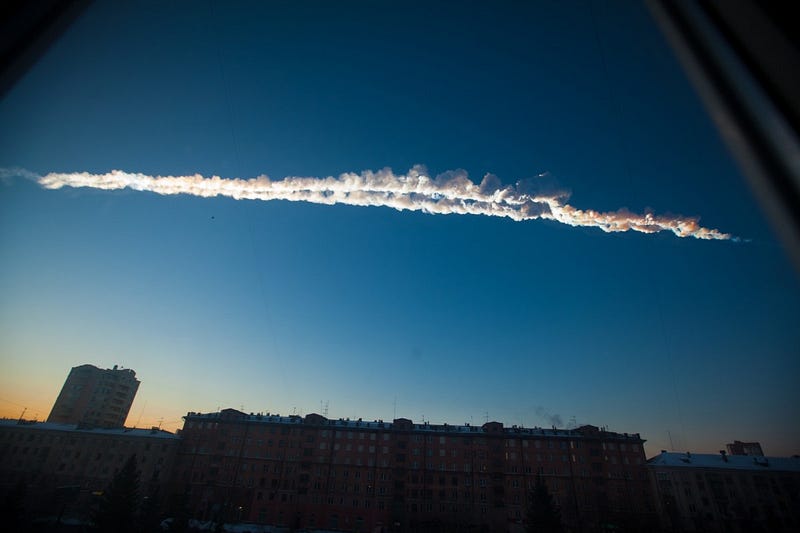
7.) Someone freaks out about a large asteroid hitting Earth; no large asteroids do.
Are you tired of people crying “wolf” in a grab to get funding for their low-probability, high-risk investment? There’s perhaps no better example of that than the field of asteroid defense. Yet realistically, we get only two “common” asteroid strikes per year, where a common strike causes no fatalities and — at worst — moderate property damage akin to a flood or tornado.
But giant-crater-causing strikes, city-killers or worse, or even “near misses” of large (~km-sized) asteroids are incredibly rare (for reasonable definitions of “near misses”), despite what you might hear. Every year, there’s at least one viral story of an Oh-No! asteroid coming for us; I predict we get another one next year. I also predict that it turns out to be grossly overblown, and no threat to us at all. (But I could be wrong; sometimes you win — or in this case, lose — the cosmic lottery!)
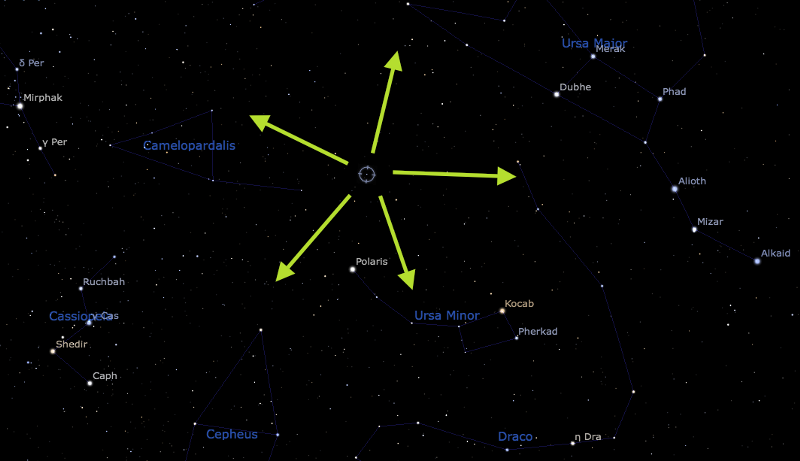
8.) The Camelopardalids — Earth’s newest meteor shower — is again a disappointment.
But it won’t be forever! In 2012, the comet 209P/Linear had a close encounter with Jupiter, hurling it into the inner Solar System. In 2014, it passed just a few million miles from Earth, dragging a small debris trail with it, and giving rise to the first Camelopardalid meteor shower. It was a big disappointment, producing only 5–10 meteors per hour at a peak on May 23rd/24th. There were virtually no meteors in 2015, and there won’t be again in 2016.
But the comet that generated it is on a five year periodic orbit! Come back again and give it another try in 2019. As it passes close by the Sun, producing a tail and cometary debris, we’ll have a much better chance in three more years!

9.) That “super-Earth” in the outer Solar System? Bet it turns out to be a standard Kuiper belt object.
Last week, the internet went crazy over the possibility that the most distant object in our Solar System had just been discovered. The headline was that it was a super-Earth — or a world between the size of Earth and Neptune — located some eight times as far away as Pluto is today. But that possibility, despite out greatest hopes, is exceedingly unlikely; planet-like objects around our Sun are all in the plane of the ecliptic, but this one is mis-aligned by a whopping 42 degrees!
It’s much more likely that this is an object in the outer Solar System, but much closer (at around the distance of Sedna) and smaller than Pluto. Other possibilities would likely put this object far outside our Solar System — like the fact that it’s either a brown dwarf or a full-fledged star — but that’s disfavored because we’d see infrared radiation coming from it that we haven’t seen. Follow-up observations over the next year, tracking its motion, should better tell us its orbital properties, and should be sufficient to confirm or rule out the super-Earth possibility. I bet on “rule out.”
10.) The 2016 Nobel Prize in Physics will go to one of the three following discoveries:
- Fermionic condensates and other properties of super-cold atomic gases, likely to Deborah Jin.
- Tiny, nanoscale power generators that work on the pressure of electricity generation from pressure (piezoelectricity), likely to Zhong Lin Wang.
- The discovery of planets orbiting stars other than our own, likely in a three-way split between either William Borucki (the P.I. of Kepler) or Aleksander Wolszczan (who discovered the first planet around a pulsar in 1992), and Michel Mayor and Didier Queloz, who discovered the first planet around a star in 1995.
There’s no reason to believe that there won’t be Nobels awarded for these three separate discoveries sometime over the next decade, but my bet for this year’s would be for the exoplanets.
Agree? Disagree? Tell us what you think 2016 will hold!
Leave your comments on our forum, help Starts With A Bang! deliver more rewards on Patreon, and order our first book, Beyond The Galaxy, today!





